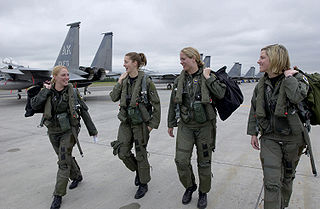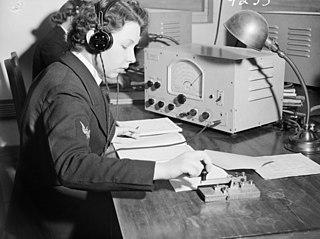Second lieutenant is a junior commissioned officer military rank in many armed forces, comparable to NATO OF-1a rank.
An officer candidate school (OCS) is a military school which trains civilians and enlisted personnel in order for them to gain a commission as officers in the armed forces of a country. How OCS is run differs between countries and services. Typically, officer candidates have already attained post-secondary education, and may even hold a Bachelor's degree, and undergo a short duration of training which focuses primarily on military skills and leadership. This is in contrast with a military academy which includes academic instruction leading to a bachelor's degree.

The Royal Military College, Duntroon, also known simply as Duntroon, is the Australian Army's officer training establishment. It was founded at Duntroon, in Canberra, Australian Capital Territory, in 1911 and is at the foot of Mount Pleasant near Lake Burley Griffin, close to the Department of Defence headquarters at Russell Hill. It is comparable to the United Kingdom's Royal Military Academy Sandhurst and the United States Military Academy at West Point. Duntroon is adjacent to the Australian Defence Force Academy (ADFA), which is Australian Defence Force's tri-service military academy that provides military and tertiary academic education for junior officers of the Australian Army, Royal Australian Air Force and the Royal Australian Navy.

Women have served in the military in many different roles in various jurisdictions throughout history. Since 1914, in western militaries, women have served in greater numbers and more diverse roles than before. In the 1970s, most Western armies began allowing women to serve in active duty in all military branches. In 2006, eight countries conscripted women into military service. In 2013, Norway became the first NATO country to draft women, as well as the first country in the world to conscript women on the same formal terms as men. In 2017, neighboring Sweden followed suit and in 2018, the Netherlands joined this line-up.

Army Recruit Training Centre (ARTC) is the official name given to the Australian Army's basic training establishment since 1 December 1998. Situated at Kapooka, an outer suburb of Wagga Wagga, in the Riverina region of New South Wales, the Army Recruit Training Centre (ARTC) is located within Blamey Barracks, about 9.5 km south-west of Wagga Wagga.

The Officer Cadet School, Portsea was an officer training establishment of the Australian Army. Established at Portsea in Victoria, Australia, in 1951 to provide training to officer cadets prior to commissioning, for many years OCS provided the Australian Regular Army with the bulk of its junior officers. However, following a review of military training establishments in Australia in the mid-1980s, the school was eventually closed in 1985, as the Royal Military College, Duntroon, assumed sole responsibility for training Army officers.

The Women's Royal Australian Naval Service (WRANS) was the women's branch of the Royal Australian Navy (RAN). In 1941, fourteen members of the civilian Women's Emergency Signalling Corps (WESC) were recruited for wireless telegraphy work at the Royal Australian Navy Wireless/Transmitting Station Canberra, as part of a trial to free up men for service aboard ships. Although the RAN and the Australian government were initially reluctant to support the idea, the demand for seagoing personnel imposed by the Pacific War saw the WRANS formally established as a women's auxiliary service in 1942. The surge in recruitment led to the development of an internal officer corps. Over the course of World War II, over 3,000 women served in the WRANS.
Major General Elizabeth Cosson, is the current Secretary of the Department of Veterans' Affairs, and has been a career senior public servant since 2010. Cosson has "vowed" to resign as Secretary of the Department of Veterans’ Affairs, on 19 July 2020, if she cannot improve the department’s relationship with veterans stating in a media interview on 19 July 2019 that "if I’m still part of the problem in 12 months I will hand over [the job]."
Women in combat are female military personnel assigned to combat positions. This article covers the situation in major countries, provides a historical perspective, and reviews the main arguments made for and against women in combat.

The Australian Women's Army Service (AWAS) was a non-medical women's service established in Australia during the Second World War. Raised on 13 August 1941 to "release men from certain military duties for employment in fighting units" the service grew to over 20,000-strong and provided personnel to fill various roles including administration, driving, catering, signals and intelligence. Following the end of the Second World War, the service was demobilised and ceased to exist by 1947. It later provided a cadre of experienced personnel to the Women's Royal Australian Army Corps when it was established in 1951.

Clare Grant Stevenson, AM, MBE was the inaugural Director of the Women's Auxiliary Australian Air Force (WAAAF), from May 1941 to March 1946. As such, she was described in 2001 as "the most significant woman in the history of the Air Force". Formed as a branch of the Royal Australian Air Force (RAAF) in March 1941, the WAAAF was the first and largest uniformed women's service in Australia during World War II, numbering more than 18,000 members by late 1944 and making up over thirty per cent of RAAF ground staff.
The Officer Training Unit, Scheyville was a military training establishment for officers of the Australian Army. Located in the area of Scheyville in the Hawkesbury region of Sydney, Australia, the establishment was opened in April 1965 to train officer cadets who had been called up for service under the national service scheme and offered a short but rigorous commissioning course for trainees, tailored to meet the Army's need to increase the number of junior officers being produced in order to meet commitments to train national servicemen, and to provide platoon commanders for units serving overseas in Vietnam and other parts of Southeast Asia. It was closed in 1974 after the national service scheme was abolished in December 1972 and the last OCS Portsea class finished their time at Scheyville.

Sybil Howy Irving, MBE was the founder and controller of the Australian Women's Army Service during World War II. She served in this position from 1941 to 1946 and was active in charity and social organisations until she was aged 74.

Women currently make up 17.9% of the ADF workforce. Women have served in Australian armed forces since 1899. Until World War II women were restricted to the Australian Army Nursing Service. This role expanded in 1941–42 when the Royal Australian Navy (RAN), Australian Army and Royal Australian Air Force established female branches in which women took on a range of support roles. While these organisations were disbanded at the end of the war, they were reestablished in 1950 as part of the military's permanent structure. Women were integrated into the services during the late 1970s and early 1980s, but were not allowed to apply for combat roles until 2013. Women can now serve in all positions in the Australian Defence Force (ADF), including the special forces.

The US Army Air Forces in WWII had major subordinate Commands below the Air Staff level. These Commands were organized along functional missions. One such Command was the Flying Training Command (FTC). It began as Air Corps Flying Training Command on 23 January 1942, was redesignated Army Air Forces Flying Training Command (AAFTC) on 15 March 1942, and merged with Army Air Forces Technical Training Command to become Army Air Forces Training Command on 31 July 1943. Continuing service after the war, it was redesignated Air Training Command on 1 July 1946. During the consolidation of Air Force Major Commands in the retrenchment of the 1990s, Air Training Command assumed control of Air University and became Air Education and Training Command on 1 July 1993—today's Air Education and Training Command (AETC), which celebrated its 75th anniversary 23 January 2017. see the Lineage and honors statement for AETC.

An officer is a member of an armed forces or uniformed service who holds a position of authority.

Major General Simone Louise Wilkie, is a retired Australian Army officer who was the Australian Deputy National Commander in the War in Afghanistan in 2011 and 2012. She was Assistant Chief of Staff to General David Petraeus during the Iraq War troop surge of 2007, and was the first female Commanding Officer of the Royal Military College, Duntroon and Commandant at the Army Recruit Training Centre at Kapooka. In March 2013 the Minister for Defence, Stephen Smith, announced her promotion to major general to take over as Commander of the Australian Defence College in July 2013.

Sexual harassment in the military is unwanted sexual behaviour, which is defined as threatening, offensive, or otherwise upsetting to others in a military setting. The behaviour is more common in the military than in civilian life. Women are substantially more likely than men to experience sexual harassment in the armed forces. Other groups at higher risk include child cadets/recruits and military detainees.

Colonel Barbara Edweina Audrey Starrett was an Australian military officer and instructor. She entered the service as a nurse and went on to attend officers' training. Serving as an instructor, she worked her way through the ranks becoming the chief instructor at the Women's Royal Australian Army Corps (WRAAC) School in Georges Heights. Between 1977 and 1979, she served as the fourth and last director of the WRAAC, having the distinction of being the first director who had not served during wartime.

Helen Cutler, Lady Cutler, was a lieutenant in the Australian Women's Army Service (AWAS) during World War II and an Australian charity worker and patron. She also fulfilled public duties as wife of Sir Roden Cutler, governor of New South Wales.














